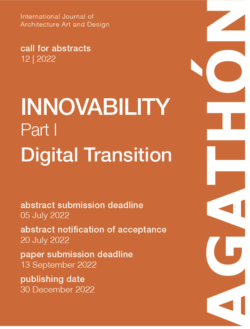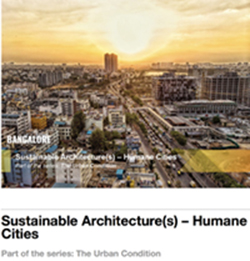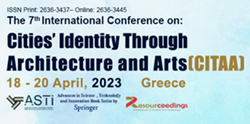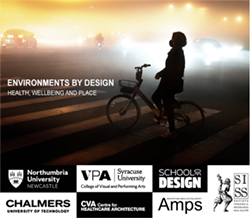Apr
2021
Connections in a concrete structure are established either in the form of anchors (or fasteners) connecting structural or nonstructural components to the structure, or in the form of reinforcement embedded in concrete or as a part of steel-concrete composite construction. To ensure structural integrity, it is essential to form a reliable connection between steel and concrete. A well-performing anchorage (fastening) is a must to ensure the interaction between the components connected to the structure and the structure itself. The required flow of forces from concrete to steel and vice versa is established through a sufficient bond between reinforcement and concrete. The anchorage zones are crucial for desirable interaction between the concrete and steel structural members in a composite construction. Thus, in principle, the integrity of the entire structure relies heavily on the connections between steel and concrete. With the advancement in production technologies, new products such as post-installed anchors, anchor channels, high-strength reinforcing bars, nonmetallic reinforcement, etc. are being developed, and it is essential to verify their performance in concrete. Similarly, the compatibility of newly developed concrete-based materials such as high-performance concrete, fiber-reinforced concrete, geopolymer concrete, etc. with the anchorages and reinforcement must be verified.
Practical and innovative solutions are needed for connections in real-life situations, and corresponding reliable design models are needed. In particular, the design models for anchorages are rather limited in scope, and many design issues need to be addressed. Some of these include various geometric configurations, anchorages under seismic loading, anchorages with supplementary reinforcement, anchor channels under different loading combinations, fatigue behavior, long-term performance, influence of corrosion on performance of anchorages, anchorages under extreme loading, etc. Not only is experimental research needed to answer these questions, but new numerical modeling approaches also need to be developed for deeper understanding of the topics. Another very important aspect is the harmonization of design methods. For example, post-installed reinforcement can be designed either as an anchorage following the principles of fastening technology or as a reinforcing bar following the principles of reinforced concrete. However, the two principles generally lead to very different design solutions. Similarly, the fastening technology principles require the base plate connecting different anchors to be rigid and stiff elastic, while composite construction principles recommend designing the base plate for yielding. These approaches need harmonization.
Often, the performance of structures under extreme hazards of earthquakes, impact or fire is dominated by the performance of its connections. Reliable design of connections against such hazards calls for performance-based approaches where the compatibility requirements between different components are accounted for. Every type of strengthening needs a certain type of anchorage. The performance of the strengthening depends largely on the performance of the anchorage itself. Very high and challenging demands are imposed on the anchorages used in strengthening (e.g., seismic strengthening). Some of these include high forces, large crack widths, combined load and crack cycling, limited area and depth to develop the required resistance, limited access due to existing reinforcement, etc. Innovative strengthening methods along with anchorage techniques need to be developed that would allow the strengthening to serve its desired function and ensure the safe functioning of the structure.
The proposed Special Issue targets the above-mentioned issues in the field of connections in concrete and offers a platform to researchers and experts worldwide to showcase their work. Currently, there is no journal that is dedicated to the problems of connections in concrete, and therefore, publications in this field are often directed to journals that provide a more general scope. In the experience of the proposer, it is often quite difficult to find a suitable journal to present the work in the field of connections in concrete. This issue would offer a new chance to hundreds of researchers working in the field of connections in concrete to publish their work. Additionally, since connections in concrete are, in general, not widely covered in classroom teaching, practitioners and consultants often look for innovative answers and solutions to their problems. This issue would offer them a place to look for such innovative solutions.
Keywords: Cast-in anchorages including anchor channels; Bond between reinforcement and concrete; Anchorages in composite construction; Anchorages in structural strengthening; Post-installed mechanical anchors; Adhesive anchors and post-installed reinforcement; Bond of special reinforcement in concrete; Anchorages in special concretes; Numerical modeling of anchorages and bond; Code based design models; Performance based approaches for anchorages; Connections under seismic actions; Connections under extreme situations (fire, impact); Connections under special action.
Connections in Concrete
Connections in a concrete structure are established either in the form of anchors (or fasteners) connecting structural or nonstructural components to the structure, or in the form of reinforcement embedded in concrete or as a part of steel-concrete composite construction. To ensure structural integrity, it is essential to form a reliable connection between steel and concrete. A well-performing anchorage (fastening) is a must to ensure the interaction between the components connected to the structure and the structure itself. The required flow of forces from concrete to steel and vice versa is established through a sufficient bond between reinforcement and concrete. The anchorage zones are crucial for desirable interaction between the concrete and steel structural members in a composite construction. Thus, in principle, the integrity of the entire structure relies heavily on the connections between steel and concrete. With the advancement in production technologies, new products such as post-installed anchors, anchor channels, high-strength reinforcing bars, nonmetallic reinforcement, etc. are being developed, and it is essential to verify their performance in concrete. Similarly, the compatibility of newly developed concrete-based materials such as high-performance concrete, fiber-reinforced concrete, geopolymer concrete, etc. with the anchorages and reinforcement must be verified.
Practical and innovative solutions are needed for connections in real-life situations, and corresponding reliable design models are needed. In particular, the design models for anchorages are rather limited in scope, and many design issues need to be addressed. Some of these include various geometric configurations, anchorages under seismic loading, anchorages with supplementary reinforcement, anchor channels under different loading combinations, fatigue behavior, long-term performance, influence of corrosion on performance of anchorages, anchorages under extreme loading, etc. Not only is experimental research needed to answer these questions, but new numerical modeling approaches also need to be developed for deeper understanding of the topics. Another very important aspect is the harmonization of design methods. For example, post-installed reinforcement can be designed either as an anchorage following the principles of fastening technology or as a reinforcing bar following the principles of reinforced concrete. However, the two principles generally lead to very different design solutions. Similarly, the fastening technology principles require the base plate connecting different anchors to be rigid and stiff elastic, while composite construction principles recommend designing the base plate for yielding. These approaches need harmonization.
Often, the performance of structures under extreme hazards of earthquakes, impact or fire is dominated by the performance of its connections. Reliable design of connections against such hazards calls for performance-based approaches where the compatibility requirements between different components are accounted for. Every type of strengthening needs a certain type of anchorage. The performance of the strengthening depends largely on the performance of the anchorage itself. Very high and challenging demands are imposed on the anchorages used in strengthening (e.g., seismic strengthening). Some of these include high forces, large crack widths, combined load and crack cycling, limited area and depth to develop the required resistance, limited access due to existing reinforcement, etc. Innovative strengthening methods along with anchorage techniques need to be developed that would allow the strengthening to serve its desired function and ensure the safe functioning of the structure.
The proposed Special Issue targets the above-mentioned issues in the field of connections in concrete and offers a platform to researchers and experts worldwide to showcase their work. Currently, there is no journal that is dedicated to the problems of connections in concrete, and therefore, publications in this field are often directed to journals that provide a more general scope. In the experience of the proposer, it is often quite difficult to find a suitable journal to present the work in the field of connections in concrete. This issue would offer a new chance to hundreds of researchers working in the field of connections in concrete to publish their work. Additionally, since connections in concrete are, in general, not widely covered in classroom teaching, practitioners and consultants often look for innovative answers and solutions to their problems. This issue would offer them a place to look for such innovative solutions.
Keywords: Cast-in anchorages including anchor channels; Bond between reinforcement and concrete; Anchorages in composite construction; Anchorages in structural strengthening; Post-installed mechanical anchors; Adhesive anchors and post-installed reinforcement; Bond of special reinforcement in concrete; Anchorages in special concretes; Numerical modeling of anchorages and bond; Code based design models; Performance based approaches for anchorages; Connections under seismic actions; Connections under extreme situations (fire, impact); Connections under special action.
Clockss (Digital Archive), e-Helvetica (Swiss National Library Digital Archive), Google Scholar, EBSCOhost (EBSCO Publishing).
Info at: www.mdpi.com/journal/civileng/apc
Guest Editor
Dr. Akanshu Sharma










